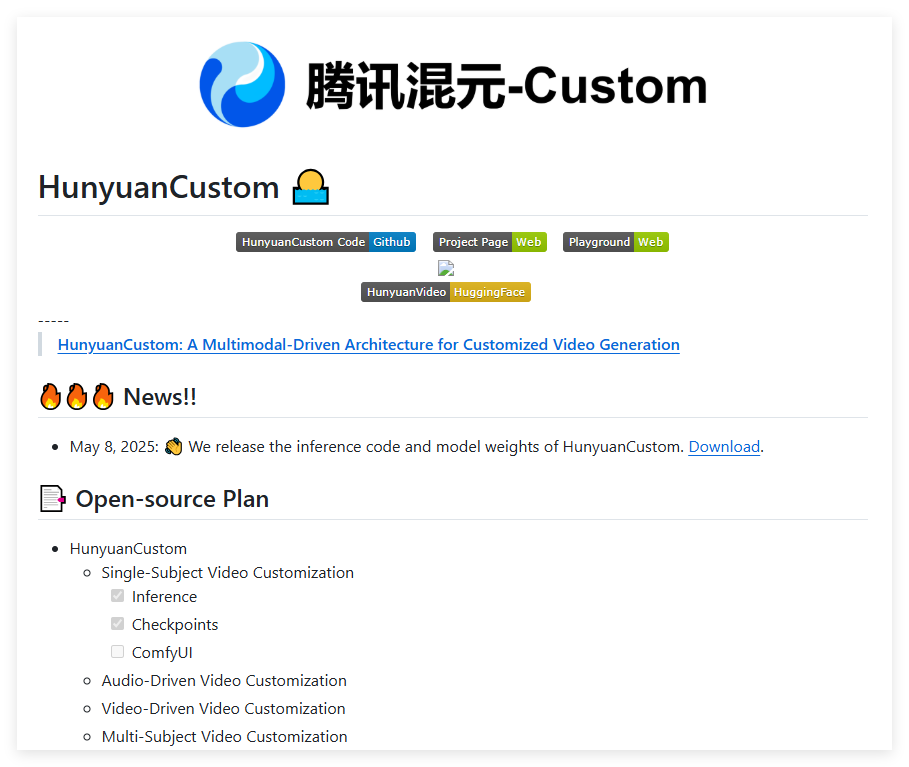
HunyuanCustom is a multimodal custom video generation framework designed to generate videos on specific topics based on user-defined conditions. This technology performs excellently in identity consistency and support for multiple input modes. It can handle text, image, audio and video inputs, and is suitable for a variety of application scenarios such as virtual human advertising and video editing.
Demand population:
"This product is suitable for video producers, advertising creative teams and virtual developers. HunyuanCustom supports a variety of input forms to enable creators to quickly generate high-quality customized videos to meet the needs of advertising, entertainment and other fields."
Example of usage scenarios:
Use images and audio to generate virtual human ads, driving character conversations through audio.
Replace roles in existing videos to achieve personalized video editing.
Create avatar of singing so that it can perform a specified musical work.
Product Features:
Supports multimodal input: can process text, images, audio and video for flexible customization.
Identity consistency: Maintains the consistency of topics in videos by introducing image ID enhancement modules and time cascades.
Audio driver generation: combines audio input to enable the characters in the generated video to speak the corresponding content.
Video object replacement: Allows the replacement of a specified object in a video, consistent with the subject in a given image.
Supports single and multi-theme scenarios: suitable for video generation requirements for single or multiple topics.
Extended application scenarios: It can be used in various applications such as virtual fittings, virtual human advertisements, singing avatars, etc.
High-quality generation: Provides higher sense of realism and text-video alignment compared to existing methods.
Parallel inference support: Efficient inference can be performed on multiple GPUs to improve generation speed.
Tutorials for use:
1.Clone the HunyuanCustom code base.
2. Install the required dependencies, including PyTorch and other libraries.
3. Download the pretrained model and set the environment variables.
4. Prepare the input file (image, audio or video).
5. Run the build script using the command line, specifying input and conditions.
6. Wait for the model to generate video and check the output results.
7. Adjust inputs and parameters according to requirements to optimize the generation effect.







